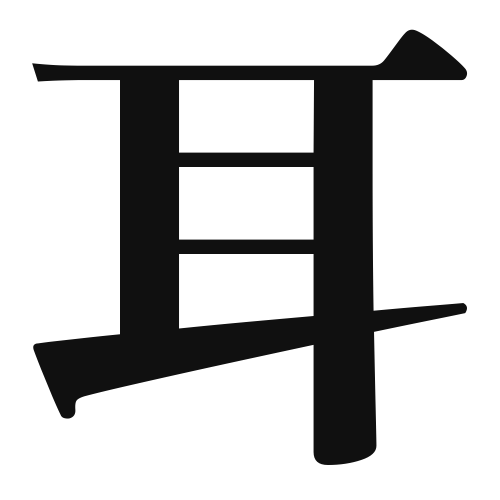1. Overview of Meaning
The kanji “耳” (pronounced “mimi” in Japanese) means “ear.” It represents the organ used for hearing and is also associated with listening and understanding.
2. Formation and Radical
Formation of the Kanji: The kanji “耳” is a pictogram, originally depicting the shape of an ear. It belongs to the category of ideograms, as it conveys the concept of hearing and listening.
Radical: The radical for “耳” is also “耳,” which is used in other kanji related to hearing and sound.
3. Examples of Usage
Common Words and Phrases: Some frequently used words that include “耳” are:
- 耳鼻科 (じびか, “jibika”) – otolaryngology (ear, nose, and throat medicine)
- 耳元 (みみもと, “mimimoto”) – near the ear
- 耳を傾ける (みみをかたむける, “mimi o katamukeru”) – to listen attentively
Example Sentences in Daily Conversation:
- 彼は私の話を耳を傾けて聞いてくれた。
(かれはわたしのはなしをみみをかたむけてきいてくれた。)
(He listened to my story attentively.) - 耳が痛い話だ。
(みみがいたいはなしだ。)
(It’s a painful topic to hear about.)
4. Synonyms and Antonyms
Similar Kanji: A similar kanji is “聴” (ちょう, “chou”), which means “to listen” or “to hear,” but it emphasizes the act of listening more than just the physical ear.
Opposite Kanji: An antonym could be “無視” (むし, “mushi”), which means “to ignore,” indicating a lack of listening or attention.
5. Cultural and Historical Background
Relation to Japanese Culture: In Japanese culture, the ear is often associated with wisdom and understanding. Listening is considered a vital skill in communication.
Proverbs and Idioms: One common idiom is “耳が痛い” (みみがいたい, “mimi ga itai”), which means “to hear something unpleasant” or “to be told something that hits close to home.”
